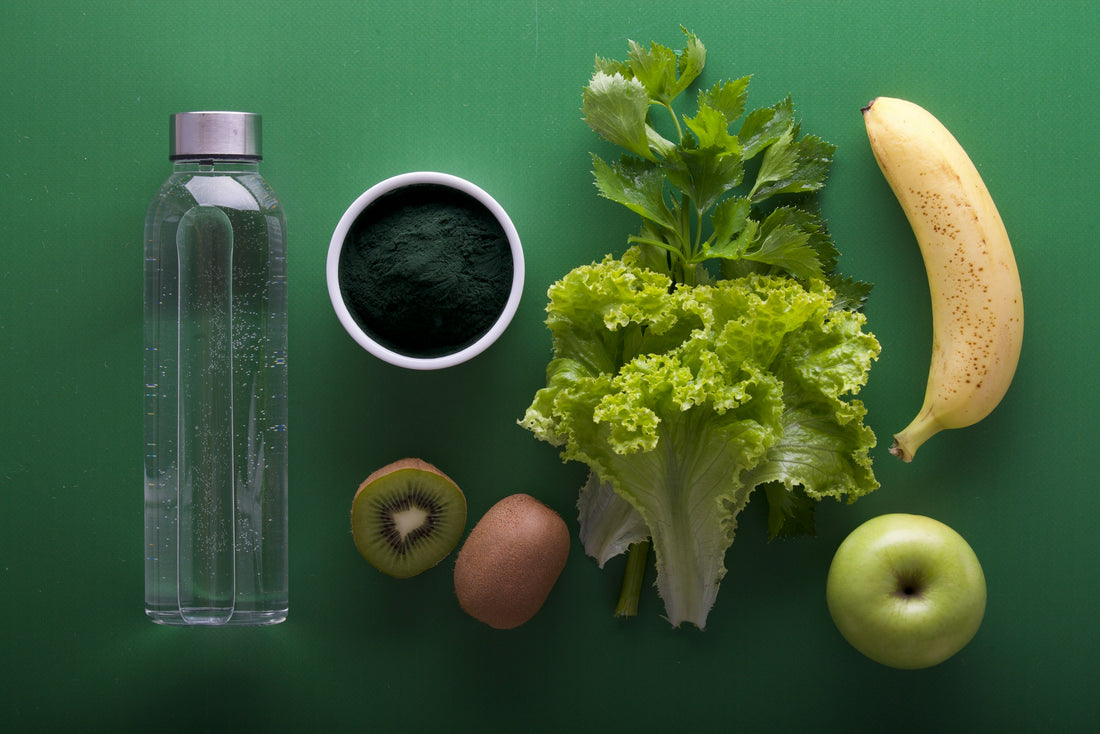
Eat Green and Live Green: The Benefits of the St. Patrick's Day Colors
Share
The world recently celebrated St. Patrick’s Day. And while we may have put away our green beer and green decor, the holiday is a great reminder of the health benefits of all things green — from green foods to a green lifestyle. From reducing your cancer risks to strengthening your immune system, give these health ideas the green light and see the difference they make in your wellness and energy levels.
Eat Green: Why Green Foods Are Good For More Than Just St. Patrick’s Day
 The term “luck of the Irish” dates back decades and refers to the success of Irish immigrants as they traversed the world. And when it comes to green foods, your body, brain and immune system are in luck. In fact, the green hues in these foods are actually due to important molecules in the food itself.
The term “luck of the Irish” dates back decades and refers to the success of Irish immigrants as they traversed the world. And when it comes to green foods, your body, brain and immune system are in luck. In fact, the green hues in these foods are actually due to important molecules in the food itself.
“Colorful fruits and vegetables can paint a beautiful picture of health because they contain phytonutrients, compounds that give plants their rich colors as well as their distinctive tastes and aromas,” explains Harvard Medical School. Writing for the school, medical expert Katherine D. McManus, MS, RD, LDN, notes that these phytonutrients help to boost the plant’s immune system — and research reveals it can do the same for us, too.
“When humans eat plant foods, phytonutrients protect us from chronic diseases,” says McManus. “Phytonutrients have potent anti-cancer and anti-heart disease effects. And epidemiological research suggests that food patterns that include fruits and vegetables are associated with a reduced risk of many chronic diseases, including cardiovascular disease, and may be protective against certain types of cancers.”
Eat green, but how much? It all depends on who you ask, reports the medical team at Scripps, warning that only 1 in 10 Americans eat enough fruits and veggies (green or otherwise!). “The US Department of Agriculture…recommends making half your plate fruits and vegetables,” they note. “The American Heart Association (AHA) recommends four to five servings each of fruits and vegetables daily. [And a’ recent study of two million adults found that consuming at least five daily servings of fruits and vegetables — or a ‘5-a-day’ approach as it is known popularly — could help reduce the risk of chronic health conditions, such as heart disease and cancer.
two servings of fruit and three servings of vegetables could get the job done, according to the study published in the AHA journal Circulation.
Taste the Rainbow: Why Eat Green Specifically?
Many green phytonutrients, such as chlorophyll, carotenoids (like lutein and zeaxanthin), and flavonoids, act as antioxidants. They help neutralize harmful free radicals in the body, which can reduce oxidative stress and lower the risk of chronic diseases such as cancer, heart disease, and age-related macular degeneration.
There’s also the anti-inflammatory benefits. Certain green phytonutrients, particularly flavonoids and polyphenols, possess anti-inflammatory properties. By reducing inflammation in the body, they may help alleviate symptoms of inflammatory conditions such as arthritis and inflammatory bowel diseases.
Go deeper into the topic of inflammation: Learn more about the link between stress, inflammation, and your general health and immunity!
Other benefits include:
- Your heart health: Green phytonutrients, especially those found in leafy greens like spinach and kale, may help lower blood pressure, reduce LDL (bad) cholesterol levels, and improve overall heart function, thereby lowering the risk of heart disease and stroke.
- Detoxification support: Chlorophyll, the green pigment found in plants, is often touted for its detoxifying properties. It may help to cleanse the body of toxins, heavy metals, and harmful chemicals by binding to them and facilitating their elimination from the body. (And don’t forget to embrace the benefits of a digital detox, too!)
- Your eye health: Certain green phytonutrients, such as lutein and zeaxanthin, are particularly beneficial for eye health. They accumulate in the retina and help protect against age-related macular degeneration and cataracts by filtering out harmful blue light and reducing oxidative damage to the eyes.
Eat Green Today: Ideas to Add More Green to Your Diet
The opportunities are endless, and obviously include leafy greens like arugula, lettuce, watercress, and kale.
Think outside the box with these novel ideas:
- Spices and herbs:
- Parsley
- Cilantro
- Basil
- Mint
- Oregano
- Thyme
- Sage
- Teas like green tea and matcha
- Algae and seaweed:
- Spirulina
- Chlorella
- Nori (great for homemade sushi!)
- Wakame
- Kelp
- Supplements:
- Chlorophyll supplements
- Green superfood powders (containing various green plant extracts)
- Lutein and zeaxanthin supplements (for eye health)
- Green tea extract supplements
Don’t Forget to Live Green, Too
 Living a green lifestyle, which focuses on sustainability, environmental consciousness, and health, can bring about numerous benefits for both individuals and the planet.
Living a green lifestyle, which focuses on sustainability, environmental consciousness, and health, can bring about numerous benefits for both individuals and the planet.
Take toxins, for example.
Green living often involves using natural, eco-friendly products for cleaning, personal care, and household items. By avoiding synthetic chemicals and toxins found in many conventional products, you can reduce your exposure to harmful substances that may contribute to respiratory issues, allergies, skin irritations, and other health problems.
Go deeper into this topic: Freshen your home naturally with this homemade probiotic cleanser, and try making your own non-toxic handsoap!
Choosing green transportation options such as walking, biking, or using public transportation instead of driving can help reduce air pollution. Additionally, adopting energy-efficient practices in your home, such as using renewable energy sources and properly insulating and ventilating your living space, can improve indoor air quality and reduce the risk of respiratory problems and other health issues associated with poor air quality.
Go deeper into this topic: Learn why indoor air quality matters for your immune system, plus how to freshen and detox your indoor air at home!
Last but not least is the stress factor. Connecting with nature, practicing mindfulness, and simplifying your lifestyle by decluttering and minimizing waste can all contribute to lower stress levels and better mental health. Spending time outdoors, surrounded by green spaces, has been shown to reduce stress, anxiety, and depression and improve mood and overall well-being.
Put together, eat green and live green to experience the luck of the Irish (long after St. Patrick’s Day is over!).
References:
- https://www.go-to-ireland.com/culture/where-does-the-expression-luck-of-the-irish-come-from/
- https://www.health.harvard.edu/blog/phytonutrients-paint-your-plate-with-the-colors-of-the-rainbow-2019042516501
- https://www.scripps.org/news_items/4233-what-are-recommended-servings-of-fruits-and-vegetables
- https://extension.illinois.edu/blogs/healthy-lifestyles-last-blog/2022-02-08-eat-green-foods-better-health
